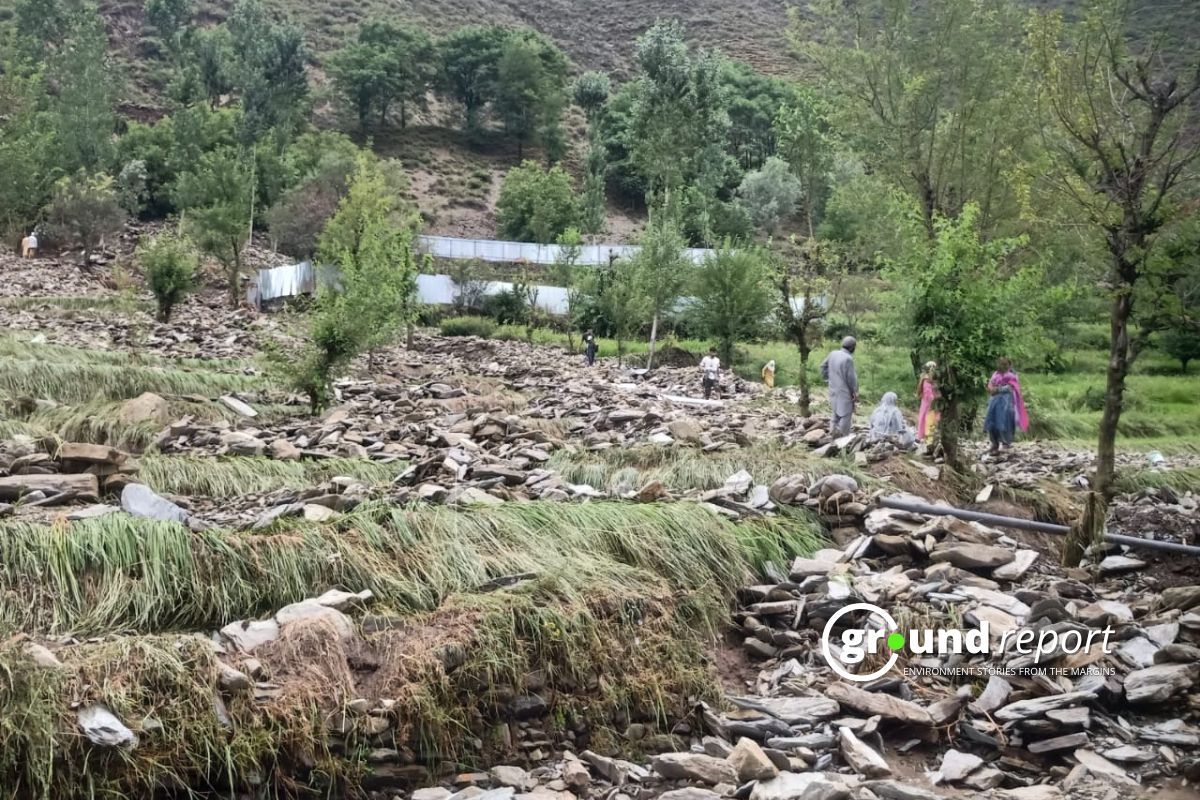The human system is sensitive to arsenic. Arsenic can get into the human body through drinking water as well as eating food that has been contaminated with arsenic. Arsenicosis, the medical word for arsenic poisoning, occurs as a result of the accumulation of large amounts of arsenic in the body. As per the data available from Central Ground Water Board, Arsenic has been found in groundwater samples spreading over 221 districts in 25 States/UTs. The problem is particularly acute in the heavily populated states of the country along the Ganga basin – UP, Bihar, Assam and West Bengal.

Arsenic Prevention and Control
As per WHO, high-arsenic sources, such as groundwater, can be substituted with low-arsenic, microbiologically safe sources such as rainwater and treated surface water. This way, low-arsenic water can be used for drinking, cooking and irrigation purposes, reserving high-arsenic water for other purposes such as bathing and washing clothes.
Education and community engagement can lead people to discriminate between high-arsenic and low-arsenic sources. Low-arsenic water can also be with higher-arsenic water to achieve an acceptable arsenic concentration level.
However, experts advocate the installation of arsenic removal systems – either centralized or domestic – as the most effective remedy against arsenic contamination.
Arsenic Remedial Techniques
Experts say that arsenic contamination is intricately linked to the aquifer geometry and groundwater flow regime. Hence, its effective treatment demands an understanding of physicochemical processes in groundwater and aquifer framework and the groundwater flow regime of the area.
The remedial measures include a variety of options, ranging from
- removing arsenic from groundwater after it is extracted,
- searching for alternative aquifers,
- reducing the level within the aquifer itself,
- diluting the contaminants by artificial recharge,
- blending with potable water etc.
The arsenic remediation techniques involving arsenic removal are grouped under two broad categories i.e. off-site and in-site techniques.
- Off-site conservation techniques primarily target lowering the concentration of arsenic after the water is extracted from aquifers. These include a variety of processes from coagulation, lime softening, and ion-exchange processes to membrane processes such as nano-filtration, ultrafiltration, reverse osmosis and electro-dialysis
- In-site (sub-surface) arsenic treatment refers to all such techniques that make arsenic immobilization possible within the aquifer itself. This is made possible by creating oxidized conditions in the subsurface such as the use of atmospheric O2 for iron and arsenic-rich water.
Government measures
The Department of Science and Technology launched the Water Technology Initiative (WTI) in the year 2007-08, with an aim to design and develop low-cost solutions for safe drinking water. The department also promoted activities to address issues related to drinking water in terms of purification, availability, reuse and recycling under the aegis of the Technology Mission “Winning, Augmentation and Renovation (WAR) for Water”.
Several R&D projects, involving water treatment systems/ processes, devices, materials, etc., for providing safe and adequate drinking water have been initiated. This also included the acclaimed AMRIT purifiers developed by Professor T Pradeep and his team at IIT-Madras. The successful lab scale systems were upscaled and prototypes were tested in real field conditions. The systems that conformed to technical performance parameters and found large community acceptance were replicated in larger numbers to generate enough scientific data for validation.
Water safety has been one of the key priorities under the Jal Jeevan Mission (JJM) – Har Ghar Jal, a flagship mission under the Ministry of Jal Shakti. Under the JJM, up to 2% of the annual allocation to States/ UTs can be utilized for Water Quality Monitoring and surveillance activities. This fund goes into setting up and strengthening water quality testing laboratories, surveillance by the community using field test kits, awareness generation and educational programmes on water quality, etc.
Additionally, under the National Aquifer Mapping Programme (NAQUIM) of the Central Ground Water Board (CGWB), special attention is being given to groundwater quality including contamination by toxic substances such as arsenic. Further, under NAQUIM, arsenic-safe deeper aquifer zones have also been identified and wells have been constructed tapping the arsenic-safe deeper aquifers using innovative cement sealing techniques. According to a PIB report, 513 exploratory wells tapping arsenic-safe aquifers have been constructed, including 40 in Bihar, 188 in West Bengal and 285 in Uttar Pradesh. In addition, the innovative cement sealing technique of CGWB has been shared with the State agencies for suitable use.
While some states like West Bengal have encouraged the use of new technological advancement and have overseen its implementation, others continue to stagger under the growing risk exposure, especially in rural areas. What is worrying, however, is that despite its havoc, the government today lacks a dedicated national water policy to tackle the arsenic menace.
Keep reading
- 16% of India’s water bodies unused, threatening water security
- Water quality under threat: land use shifts drive 69% increase in water extraction
- What is hidden behind the bottled water industry
Follow Ground Report for Climate Change and Under-Reported issues in India. Connect with us on Facebook, Twitter, Koo App, Instagram, Whatsapp and YouTube. Write us on GReport2018@gmail.com.









